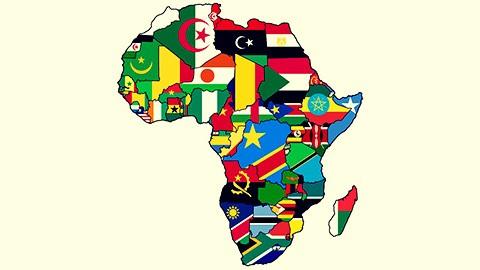Growth in Sub-Saharan Africa has slowed through 2019, hampered by persistent uncertainty in the global economy and slow pace of domestic reforms, World Bank has said.
According to the 20th edition of Africa’s Pulse, World Bank’s biannual economic update for the region, overall growth in Sub-Saharan Africa is projected to rise to 2.6 per cent in 2019 from 2.5 per cent in 2018.
This is a 0.2 percentage points lower than the April forecast. This edition of Africa’s Pulse includes special sections on accelerating poverty reduction and promoting women’s empowerment.
“Empowering women will help boost growth. African policy makers face an important choice-business as usual or deliberate steps toward a more inclusive economy,” says Hafez Ghanem, World Bank Vice President for Africa.
“After several years of slower-than-expected growth, closing the opportunity gap for women by removing barriers to their economic participation is the best way forward,”Ghanem adds.
Global uncertainty is taking a toll on growth well beyond Africa, and real GDP growth is also expected to slow significantly in other emerging and developing regions.
READ ALSO:African economies suffer effects of global economic crisis
The Middle East and North Africa, Latin America and Caribbean, and South Asia regions are expected to see even larger downward revisions in their growth forecasts than in Sub-Saharan Africa for 2019, the global lender has projected.
Beyond Sub- Saharan Africa’s regional averages, the picture is mixed. The recovery in Nigeria, South Africa, and Angola—the region’s three largest economies—has remained weak and is weighing on the region’s prospects.
In Nigeria, growth in the non-oil sector has been sluggish, while in Angola the oil sector remained weak, according to World Bank. In South Africa, low investment sentiment is weighing on economic activity.
Excluding Nigeria, South Africa, and Angola, growth in the rest of the subcontinent is expected to remain robust although slower in some countries.
The average growth among non-resource-intensive countries is projected to edge down, reflecting the effects of tropical cyclones in Mozambique and Zimbabwe, political uncertainty in Sudan, weaker agricultural exports in Kenya, and fiscal consolidation in Senegal.
READ ALSO:Why East Africa economies have cheated global shocks
In Central African Economic and Monetary Community countries, which are also resource-intensive, activity is expected to expand at a modest pace, supported by rising oil production. Growth among metals exporters is expected to moderate, as mining production slows and metal prices fall.
“Africa’s economies are not immune to what is happening in the rest of the world, and this is reflected in the subdued growth rates across the region,” says Albert Zeufack, Chief Economist for Africa at the World Bank.
“At the same time, evidence clearly links poor governance to poor growth performance, so efficient and transparent institutions should be on the priority list for African policy makers and citizens,” he adds.
Poverty reduction and women empowerment
Four in ten Africans, or over 416 million people, lived below $1.90 per day in 2015. Absent significant efforts to create economic opportunities and reduce risk for poor people, extreme poverty will become almost exclusively an African phenomenon by 2030.
READ:How Africa can create jobs, conquer poverty
According to Africa’s Pulse, the poverty agenda in Africa should put the poor in control, helping to accelerate the fertility transition, leverage the food system on and off the farm, address risk and conflict, and provide more and better public finance to improve the lives of the most vulnerable.
“A critical piece will be addressing gender gaps in health, education, empowerment and jobs,” the report notes.
Sub-Saharan Africa is the only region in the world that can boast that women are more likely to be entrepreneurs than men, and African women contribute to a large share of agricultural labor across the continent.
This success is stifled by large and persistent earnings gaps between men and women. Women farmers in Sub-Saharan Africa produce 33 per cent less per hectare of land than men do, and female entrepreneurs or business owners earn 34 percent less profits than male business owners.
These earnings gaps are very costly to African people and economies, experts have said.
Africa’s Pulse identifies six policy pathways for women’s economic empowerment.
These are; building women’s skills beyond traditional training, alleviating women’s financial constraints through innovative solutions that relieve the collateral problem and improve their access to the financial sector and helping women secure their land rights.
Others are connecting women to labor, addressing social norms that constrain women’s opportunities and building a strong new generation by helping girls to navigate their adolescence.











